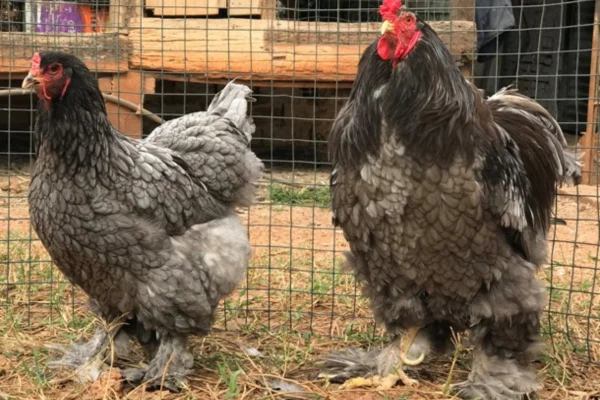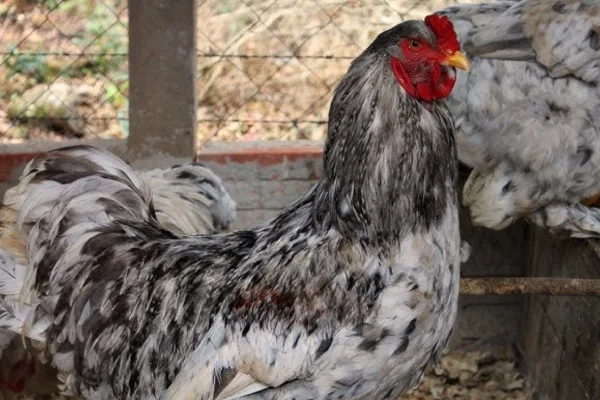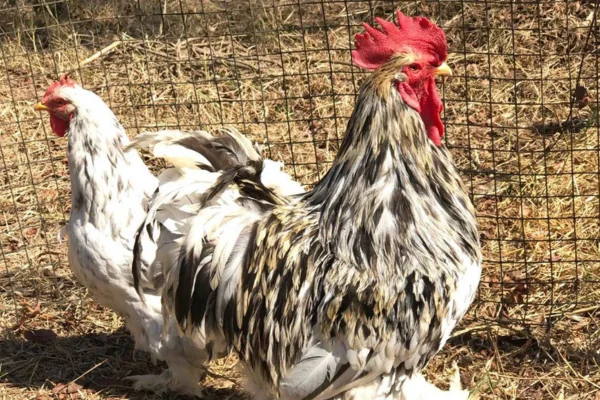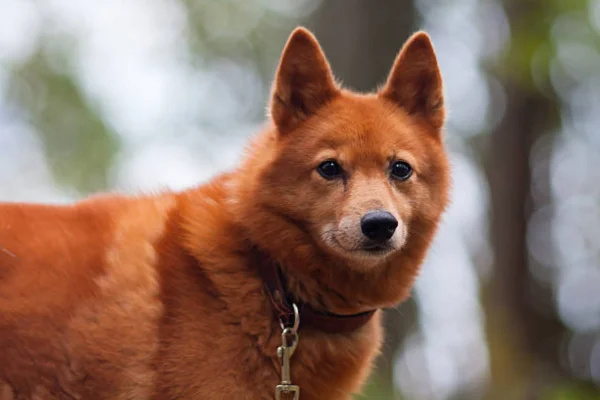Brahma Chicken: Majesty and Tradition in Poultry Breeding
The Brahma chicken is one of the most impressive and admired chicken breeds in the world. With its majestic appearance and calm temperament, this bird has won over breeders and poultry enthusiasts all over the world. In this article, we'll explore the history, physical characteristics, care requirements and some fascinating facts about this breed. Get ready to discover everything you need to know about the majestic Brahma chicken!
History and Origin of the Race
The origin of the Brahma chicken is shrouded in mystery and debate, but it is believed that this breed developed from crosses between Asian and European chickens in the 19th century. The name "Brahma" derives from the Brahmaputra river in India, although the breed was largely developed in the United States. It is believed that the Brahma was created from crosses between the Cochin, another large Asian breed, and other breeds of Chinese origin. Over time, the Brahma was refined to exhibit specific characteristics that made it a favorite for both showing and meat production.
Physical characteristics of the Brahma Chicken
The Brahma chicken is known for its imposing size and abundant plumage. They are one of the largest chicken breeds, with males weighing between 5 and 6 kilos and females ranging from 4 to 5 kilos. The plumage of these birds is dense and soft, with a variety of colors, including the classic combination of white feathers with black outlines, known as the "Light Brahma". Other variations include the "Dark Brahma" and the "Buff Brahma", each with its own distinctive color palette.
Contents
In addition to their luxurious plumage, Brahmas have strong, feathered legs, a striking feature that distinguishes them from other breeds. This feature helps protect them from the cold, making them ideal for colder climates. Brahma chickens also have a calm and docile character, which makes them excellent companions in backyards and smallholdings.

Temperament and Behavior
Brahma chickens are known for their calm and friendly temperament. They are docile birds that adapt well to human presence and are generally easy to handle. This calm demeanor makes them an excellent choice for beginner breeders and for families with children. In addition, Brahmas tend to be good mothers, showing care and protection for their chicks.
Despite their large size and imposing appearance, Brahmas are not aggressive birds. They tend to get on well with other breeds of chicken and can be kept in mixed groups without any problems. However, due to their size, it is important to ensure that they have enough space to move around comfortably.
Egg and meat production
The Brahma chicken is a dual-purpose breed, which means it is valued for both egg production and meat. The females are good layers, producing around 150 to 200 eggs a year. The eggs are medium to large, with light brown shells. Although egg production is not as high as some specialized laying breeds, the Brahma makes up for it with its ability to produce high-quality meat.
The meat of the Brahma chicken is juicy and tasty, making it a popular choice for consumption. The bird's large size also makes it a good choice for meat production. However, due to their relatively slow growth compared to specialized commercial breeds, Brahmas are more commonly raised as backyard or exhibition birds.
Care and Management in Brahma Chicken Production
Caring for Brahma chickens requires attention to some specific details. Due to their size and dense plumage, it is important to provide a spacious and well-ventilated shelter to avoid humidity problems and overcrowding. Adequate ventilation is crucial to prevent respiratory problems, especially in more humid climates.
Brahmas' diet should be balanced and rich in nutrients to support their growth and egg production. A diet of high-quality feed, supplemented with fresh grains and vegetables, is ideal. In addition, it is important to provide constant access to clean, fresh water.
Brahma chickens also need enough space to exercise. Due to their size, they are not as agile as other smaller breeds, but they still appreciate access to an outdoor space where they can scratch and explore. This helps maintain their physical and mental health.
The Cultural Importance and Role in Breeding Hens
Brahma chickens have significant cultural relevance and play an important role in the breeding of pedigree chickens in various regions of the world. Originally valued for their ability to produce meat and eggs, Brahmas have also become symbols of status and prestige among breeders of high-quality poultry. In the 19th and 20th centuries, owning Brahma chickens was a sign of distinction, especially in the United States and Europe, where they were often exhibited at poultry shows.
In addition, Brahmas are often mentioned in historical texts on poultry because of their popularity and impact on the development of other breeds. Breeders often use the Brahma as the basis for genetic improvement programs, seeking to introduce desirable characteristics such as size, plumage and temperament into new lines.
The fascination with this breed is also present in pop culture and artistic representations, where its imposing and exotic image is often used to symbolize strength and beauty. Brahma chickens continue to be a popular choice for shows and competitions, being appreciated not only for their productive qualities, but also for their impressive aesthetics.
This cultural and historical aspect adds an extra dimension to the appreciation of Brahma chickens, making them not only a practical choice for breeders, but also an element of cultural and historical interest.

Curiosities and Interesting Facts About This Breed
- Cold resistance: Due to their thick plumage and feathered legs, Brahma chickens are especially cold-resistant. They are an excellent choice for breeders in regions with harsh winters.
- Exhibition History: The Brahma Chicken has a long history of participating in poultry shows. Their majestic appearance and impressive plumage make them a highlight in poultry beauty contests.
- Variety of colors: In addition to the most common colors, such as Light, Dark and Buff, Brahmas can also be found in other color variations, each with unique plumage patterns.
- Slow growth: Although they are large birds, Brahmas have a relatively slow growth rate. This means that they take longer to reach maturity compared to fast-growing commercial breeds.
Conclusion
The Brahma chicken is an impressive and versatile breed, appreciated by breeders all over the world for its majestic appearance, docile temperament and dual-purpose qualities. Whether for egg production, meat or simply as an ornate addition to the yard, Brahmas offer a unique combination of beauty and functionality. With the right care and management, these birds can thrive and bring many years of joy to their breeders.
If you're considering adding Brahma chickens to your flock, be prepared to marvel at these majestic birds and enjoy their quiet, graceful company. Whether you're an experienced breeder or a beginner in the world of poultry, the Brahma is sure to bring an elegant and imposing presence to your yard.
Thank you for visiting us and check out our other work








